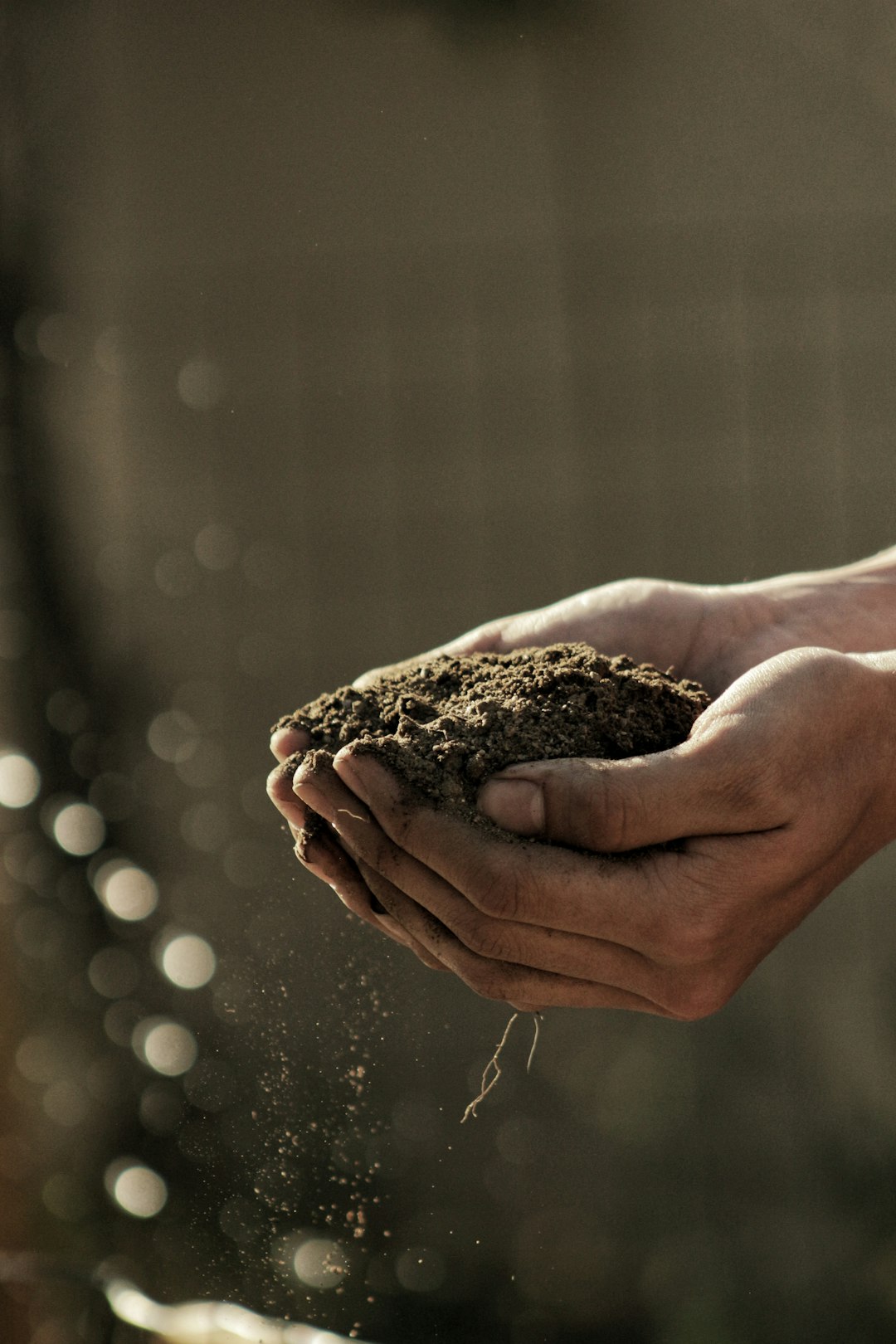Support our educational content for free when you purchase through links on our site. Learn more

Quick Answer: Starting a community garden can be a rewarding endeavor, but it comes with its fair share of challenges. From finding a suitable location to securing funding and resources, getting support and participation, and managing and maintaining the garden, there are several obstacles to overcome. However, with careful planning, community engagement, and perseverance, you can create a thriving green space that brings people together and enhances the local community.
Are you ready to embark on the journey of starting a community garden? Picture this: a vibrant green space where neighbors come together, grow their own food, and foster a sense of community. While the idea of a community garden is undoubtedly appealing, it’s important to be aware of the challenges that come with it. In this article, we’ll explore the various obstacles you may encounter when starting a community garden and provide practical tips and solutions to overcome them. So, grab your gardening gloves and let’s dig in!
Table of Contents
- Quick Answer
- Quick Tips and Facts
- Background: The Power of Community Gardens
- Finding the Perfect Location: Sun, Soil, and Safety
- Securing Funding and Resources: Turning Dreams into Reality
- Getting Support and Participation: Cultivating Community Engagement
- Managing and Maintaining the Garden: Nurturing Growth and Overcoming Challenges
- Miscellaneous Challenges: Addressing Conflicts and Fostering Inclusivity
- FAQ
- Conclusion
- Recommended Links
- Reference Links
Quick Tips and Facts
✅ Starting a community garden requires careful planning, community engagement, and perseverance.
✅ Finding a suitable location with adequate sunlight, good soil quality, and accessibility is crucial.
✅ Securing funding and resources through grants, sponsorships, and partnerships is essential for a successful community garden.
✅ Engaging community members, assigning roles and responsibilities, and collaborating with local organizations can help foster participation.
✅ Developing a maintenance schedule, planning for pests and diseases, and adapting to fluctuations in participation are key to managing and maintaining the garden.
✅ Addressing conflicts, ensuring accessibility, and promoting intergenerational and cross-cultural exchanges contribute to a thriving and inclusive community garden.
Background: The Power of Community Gardens

Before we dive into the challenges of starting a community garden, let’s take a moment to appreciate the power and impact these green spaces can have on individuals and communities. Community gardens provide a unique opportunity for people to connect with nature, grow their own food, and build strong bonds with their neighbors. They serve as a hub for education, recreation, and social interaction, fostering a sense of belonging and empowerment.
Now, let’s explore the challenges you may encounter when starting a community garden and how to overcome them.
Finding the Perfect Location: Sun, Soil, and Safety
One of the first challenges you’ll face is finding a suitable location for your community garden. The right location can make all the difference in the success of your garden. Here are some factors to consider:
-
Accessibility: Choose a location that is easily accessible to community members, especially those with mobility challenges. Consider proximity to public transportation and parking availability.
-
Sunlight: Ensure the location receives ample sunlight throughout the day. Most vegetables and herbs require at least 6-8 hours of direct sunlight to thrive.
-
Soil Quality: Assess the soil quality to determine if it’s suitable for gardening. Conduct a soil test to check for nutrient levels, pH balance, and potential contaminants.
-
Safety: Prioritize safety by selecting a location in a well-lit and secure area. Avoid areas with potential hazards such as heavy traffic or environmental pollution.
To overcome these challenges, involve community members in the search for a location. Conduct surveys or hold community meetings to gather input and identify potential sites. Additionally, collaborate with local government agencies or organizations that specialize in community development to find suitable locations and navigate any legal requirements.
Securing Funding and Resources: Turning Dreams into Reality
Once you’ve found the perfect location, the next challenge is securing funding and resources to bring your community garden to life. Here’s how you can overcome this obstacle:
-
Grants and Sponsorships: Research and apply for grants and sponsorships specifically designed for community gardens. Many organizations and foundations offer funding opportunities to support community-driven initiatives.
-
Crowdfunding: Consider launching a crowdfunding campaign to raise funds for your community garden. Platforms like Kickstarter and GoFundMe can help you reach a wider audience and attract donations.
-
Partnerships: Forge partnerships with local businesses, schools, or organizations that share your vision. They may be willing to provide financial support, in-kind donations, or volunteer assistance.
-
Budgeting: Create a detailed budget that includes initial costs (tools, soil, seeds, etc.) and long-term maintenance expenses. This will help you prioritize spending and make informed decisions.
By combining multiple funding sources and leveraging community support, you can turn your dreams of a community garden into a reality.
Getting Support and Participation: Cultivating Community Engagement
A thriving community garden relies on active participation and support from community members. Here are some strategies to overcome the challenge of getting people involved:
-
Informational Meetings and Workshops: Host informational meetings and workshops to educate the community about the benefits of community gardening. Highlight the positive impact it can have on health, food security, and community building.
-
Assigning Roles and Responsibilities: Assign specific roles and responsibilities to community members to ensure shared ownership and commitment. This can include tasks such as watering, weeding, organizing events, or managing finances.
-
Collaboration with Local Organizations: Collaborate with local schools, senior centers, youth groups, or other community organizations to attract a diverse group of participants. This can foster intergenerational and cross-cultural exchanges, enriching the community garden experience.
-
Communication and Outreach: Establish effective communication channels to keep community members informed and engaged. Utilize social media, newsletters, and community bulletin boards to share updates, gardening tips, and upcoming events.
By actively engaging the community and providing opportunities for involvement, you can create a sense of ownership and pride in the community garden.
Managing and Maintaining the Garden: Nurturing Growth and Overcoming Challenges
Once your community garden is up and running, the work doesn’t stop there. Managing and maintaining the garden requires ongoing effort and attention. Here’s how you can overcome this challenge:
-
Maintenance Schedule: Develop a maintenance schedule that outlines regular tasks such as watering, weeding, and fertilizing. Assign responsibilities to community members to ensure everyone contributes to the garden’s upkeep.
-
Pests and Diseases: Plan for potential pests and diseases by implementing integrated pest management strategies. Encourage organic gardening practices and educate community members on pest identification and control methods.
-
Adapting to Fluctuations: Be prepared for fluctuations in participation due to seasonal changes, personal commitments, or unforeseen circumstances. Foster a flexible and inclusive environment that accommodates varying levels of involvement.
-
Continuous Learning: Provide opportunities for community members to learn and improve their gardening skills. Organize workshops, guest speaker events, or garden tours to share knowledge and inspire continuous growth.
By implementing effective management strategies and fostering a culture of learning, your community garden will thrive for years to come.
Miscellaneous Challenges: Addressing Conflicts and Fostering Inclusivity
In addition to the challenges mentioned above, community gardens may face other obstacles that require careful consideration. Here are a few miscellaneous challenges and how to address them:
-
Addressing Conflicts: Establish clear guidelines and decision-making processes to address potential conflicts between community members. Encourage open communication and create a space for dialogue and resolution.
-
Ensuring Accessibility: Make your community garden accessible to individuals with disabilities. Consider pathways, raised beds, and other accommodations to ensure everyone can participate and enjoy the garden.
-
Fostering Inclusivity: Promote intergenerational and cross-cultural exchanges within the community garden. Celebrate diversity and create opportunities for people from different backgrounds to connect and learn from one another.
By proactively addressing these challenges, you can create an inclusive and harmonious community garden that brings people together.
FAQ

What are some problems with community gardens?
Community gardens may face challenges such as finding a suitable location, securing funding and resources, getting support and participation, managing and maintaining the garden, addressing conflicts, and fostering inclusivity. Each of these challenges requires careful planning, community engagement, and perseverance to overcome.
Read more about “What are the Negatives of a Community Garden? … 🌱”
Why aren’t there more community gardens?
The lack of community gardens can be attributed to various factors, including limited access to suitable land, lack of funding and resources, limited community engagement, and a lack of awareness about the benefits of community gardening. Overcoming these obstacles requires collaboration, advocacy, and community-driven initiatives.
How can we improve community gardens?
To improve community gardens, it’s essential to prioritize community engagement, secure sustainable funding sources, provide educational opportunities, and foster inclusivity. By involving community members, promoting learning, and addressing challenges proactively, community gardens can thrive and have a positive impact on the local community.
Read more about “How Effective Are Community Gardens? … 🌱”
Are community gardens a good idea?
Yes, community gardens are a fantastic idea! They provide numerous benefits, including access to fresh and healthy food, opportunities for physical activity, social interaction, skill-building, and community empowerment. Community gardens have the power to transform neighborhoods, strengthen social ties, and enhance the overall well-being of individuals and communities.
Read more about “How Do Gardens Help the Environment … 🌿”
Conclusion

Starting a community garden is not without its challenges, but with careful planning, community engagement, and perseverance, you can overcome these obstacles and create a thriving green space that brings people together. From finding the perfect location to securing funding and resources, getting support and participation, and managing and maintaining the garden, each step requires dedication and collaboration. By addressing conflicts, fostering inclusivity, and promoting continuous learning, your community garden can become a vibrant hub of growth, connection, and empowerment.
So, roll up your sleeves, gather your community, and embark on the journey of creating a community garden that will leave a lasting impact on your neighborhood. Together, we can sow the seeds of change and cultivate a greener, more connected world.
Recommended Links
- Benefits of Community Gardens
- Community Garden Events
- Community Garden Policies
- Gardening for Beginners
- Garden Design Ideas
- What are the Negatives of a Community Garden? 2024 🌱
